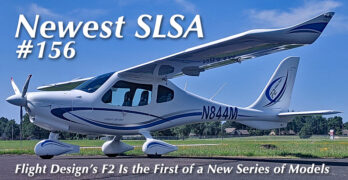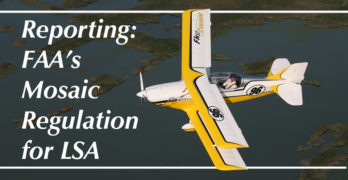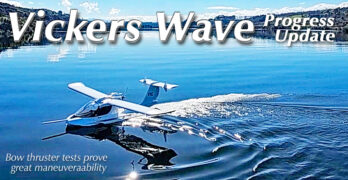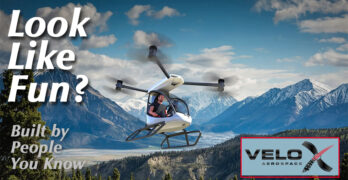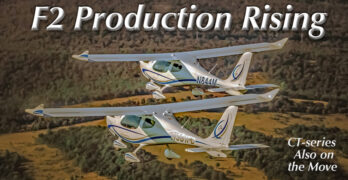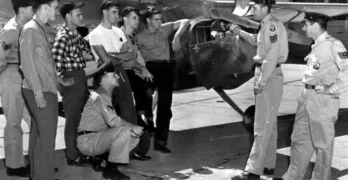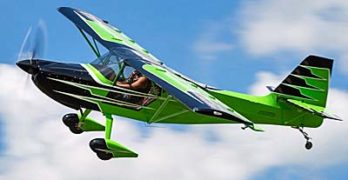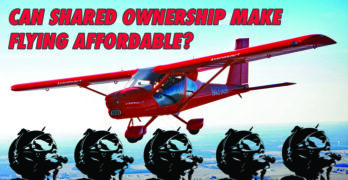Taking a welcome break from FAA news, let’s check out our favorite topic: cool new airplanes.
Welcome to the New F2
“Wait,” you exclaim! “F2 isn’t new.” Excellent, you’ve been keeping up.
What you don’t know is that Flight Design’s latest and greatest just earned FAA acceptance, winning a Special Airworthiness certificate as the latest Special LSA to enter the market.
Announcing Number 156 on our SLSA List.
Flight Design put years into this thorough evolution of their market-leading model and it has so many new qualities, we present two videos below trying to tell you about all of them.
Now Available as a
Ready-to-Fly Special LSA
“On July 8th, 2021 in Tulsa, Oklahoma, the first production Flight Design F2-LSA to reach the USA was inspected by an FAA representative and issued a certificate of airworthiness as a Special Light Sport Aircraft,” beamed Flight Design USA leader Tom Peghiny.
Search Results for : mosaic
Not finding exactly what you expected? Try our advanced search option.
Select a manufacturer to go straight to all our content about that manufacturer.
Select an aircraft model to go straight to all our content about that model.
FAA’s Proposed Regulation (MOSAIC) — LAMA’s Spring 2020 Update Report
In recent months many light aviation enthusiasts have been asking about progress on FAA’s proposed rewrite of the Light-Sport Aircraft regulations. Following a lengthy teleconference in 2019, the Light Aircraft Manufacturers Association is pleased to provide a further update for the agency’s work on MOSAIC, or Modernization of Special Airworthiness Certification. Here is our earlier article on this subject.
This update is one of a continuing series. As time passes and FAA progresses toward its goal — of issuing a NPRM, Notice of Proposed Rule Making — LAMA requests a teleconference or in-person visit to learn the rule writers’ latest concepts and language decisions.
This progress reports identifies new discoveries and clarifies previous statements that may now be better understood.
Some Key Messages
FAA is moving forward on the rulemaking project yet everything remains in progress while the agency gathers internal assessments. What follows is as accurate as possible at this time but changes will occur.
Changing LSA Seaplane Market — Vickers Wave Progress Update — Others, Hmmm…?
Winter is coming, so naturally, it’s time to start thinking about seaplanes… right? It always seems weird to write about water-based activities as frost begins to envelop the northern two-thirds of the country. Yet winter is when all the big boat shows happen because buying new vessels requires advance planning. It’s also pleasant to think about spring and summer while snow flurries fly.
For many years I’ve written about this sector and names like Searey, Seamax, and Aventura (all in nearby image) have long been the leading brands. Now the first two are in financial trouble and the last has decamped to Brazil from Florida. Whatever is going on, Vickers Wave may represent a breath of fresh air.
In articles last fall and this spring, I gave overviews of the entire LSA seaplane market (read here or here).
Vickers Wave Update
Vickers previously noted, “Wave has finished its flight testing, resulting in a 120-knot cruise and useful load of 750 pounds powered by a Rotax 916iS (reviewed here).”
“A frequently asked question I receive is, ‘What is taking so long?’,” begins Paul Vickers.
A Multicopter Current Pilots Might Enjoy? …Developed Within Our LSA Industry
Here’s a helicopter-like aircraft you might actually consider. I have often reviewed what I call multicopters (several articles). I searched for aircraft you might fly for fun; several of them can enjoy the freedom and special benefits of Part 103. I’ve stayed away from commercial “air taxi” projects.
But what if a longtime producer of Light-Sport Aircraft entered the space? What if the aircraft looked like a helicopter but one you could fly without the steep learning curve? What if it offered 45 minutes of flight with a 15-minute reserve?
The earliest entries had short flight times, 15-20 minutes. Most of them cost too much. For example, Opener’s Blackfly (now called Helix) was first promoted at the cost of a “luxury SUV,” perhaps meaning $80,000 at the time. It has since more than doubled in price.
You may doubt or dislike these flying machines, especially when you don’t know the people behind the projects.
Flight Design Increases F2 Production — Moves CT-Series
As we Floridians prepare to face Hurricane Milton starting later today, I’m pleased to give an update on one of our leading companies in the LSA space. I refer to Flight Design, which gained fame for the enviable success of its CT-series aircraft (CT2K, CTSW, CTLS, CTLSi, CT Super). In the United States, more of these models fly as LSA than aircraft from any other brand.
In the USA, importing Flight Design aircraft is now handled by Airtime Aviation, a leader in its own right. For two decades, Airtime has been the nation’s #1 seller of Light-Sport Aircraft, delivering to American pilots a large percentage of those hundreds of CT-series aircraft. Importing was previously handled by Flight Design USA; regional dealers also contributed to enlarging the CT fleet in this country. The German designer has enjoyed good success in numerous countries.
In addition to those many sales, Flight Design has long been a leader among western producers moving into Eastern Europe to take advantage of skilled technical workers and engineers.
AOPA To Get New Prez in 2025
The Aircraft Owners and Pilots Association has announced a successor to current president Mark Baker, who is set to retire at year’s end. In his place comes Darren Pleasance. The association notes that this is only the sixth president in its history, dating back to 1939. Baker has been on the job for more than 11 years. Somebody buy that man a beer!
AOPA notes that Pleasance has more than 8000 hours in 50 different types and currently owns three airplanes: A Piper Meridian, a Van’s RV-6 and a Progressive Aerodyne SeaRey.
“I’m honored with the opportunity I’m being given to help steward AOPA forward into the future, and I’m inspired by the role AOPA will continue to play in protecting our freedom to fly,” says Pleasance. “I’m grateful for the privilege I’m being given to lead this incredible organization that has had such a positive impact on my life and the lives of all of us who love aviation.”
Pleasance joins AOPA at a time when there are pressures across the spectrum, from finding a leaded-fuel replacement to rapidly rising aircraft-ownership costs.
Flying Clubs as Another Route to Affordable Aviation
In the previous article, I explained how high levels of flight activity can make access more affordable and, for most people, how that would likely be achieved only through some form of shared ownership/use. The use of the term “shared ownership/use” is deliberate because not everybody really wants or feels the need to “own” something they use but, perhaps, believes that there is no other realistic or safe alternative.
This article is based on a close examination of the reasons people give for not being open to any form of sharing and looking at how those barriers might be removed. It will also try to address the second, less discussed, part of affordability, which is “accessibility” to shared use aircraft. There is little benefit to being able to afford what does not, essentially, exist. A good, but somewhat parallel, example of this has been the original iteration of Light Sport Aircraft and Sport Pilot Licenses.
Kitfox’s Reasons for De-Emphasizing the SLSA
In the normal order of things, a successful product will probably remain in production until demand slackens, technology changes or it can’t be built effectively. But there are other reasons, some not so obvious. Case in point? Kitfox Aircraft. Since 2009, when the company began selling the Series 7 Sport, it’s cranked out roughly 40 of the factory-built LSAs, with sales always outpacing the company’s ability to produce for the first few years. Eventually, Kitfox began selling the S7 Sport with various engine options, up to the Rotax 914. Sales over the last few years have slowed to a relative trickle, but not really for reasons you’d think.
First of all, the company’s bread-and-butter is the kitbuilt side of the market, so when the factory buildings are busy and full to overflowing and the order book is growing, company owner John McBean elected to prioritize the kit side of the business over the ready-made side.
Shared Ownership — A Route To “Affordable Aviation”
I was inspired to write this article by a comment made on a previous article I wrote on MOSAIC. I had indicated that MOSAIC had the potential to bring new aircraft to market at half the price of current legacy offerings. The commenter made the point that even at half the price, this would still not make it inherently “affordable” to most people.
This topic will be covered in two articles. The first will discuss how shared ownership is able to bring down the costs of accessing an airplane and thus, making it potentially more affordable to a wider pilot demographic. The second article will detail two proposals on how some form of shared ownership could be expanded into a regional or national model.
How the Numbers Add Up
Affordability is really not a single quantifiable number that can be used to judge a product. There are simply too many other factors such as income, lifestyle and geographical location that have to be taken into account while, of course, no two people see their life priorities the same way.
Buying Used: The Ercoupe — We Don’t Need No Stinkin’ Pedals
Few legacy GA aircraft are as easily recognizable as the Ercoupe. The twin tails and large glazed canopy are distinctive, as are its lack of rudder pedals (on most models). Ercoupe Owner’s Club Executive Director Gene Bunt says, “for lack of a better explanation…it’s got major ‘cute factor’.” But apart from its unique looks, the plane is also known for being easy to fly. It was, after all, designed with the goal of being the safest fixed wing aircraft available—one that would not stall or spin.
While the Ercoupe is a type certified aircraft, many of the variants qualify within the Light Sport category. When MOSAIC comes in all of them will qualify. That’s great news for Sport Pilots looking for something “different” to fly. And, they regularly show up for sale for comparatively little money.
Development
Fred Weick, an aeronautical engineer who would later create the Piper Pawnee and have a hand in designing the Piper Cherokee, designed the Ercoupe after joining the newly formed Engineering and Research Corporation (ERCO) in 1936.
- « Previous Page
- 1
- 2
- 3
- 4
- 5
- 6
- …
- 14
- Next Page »


